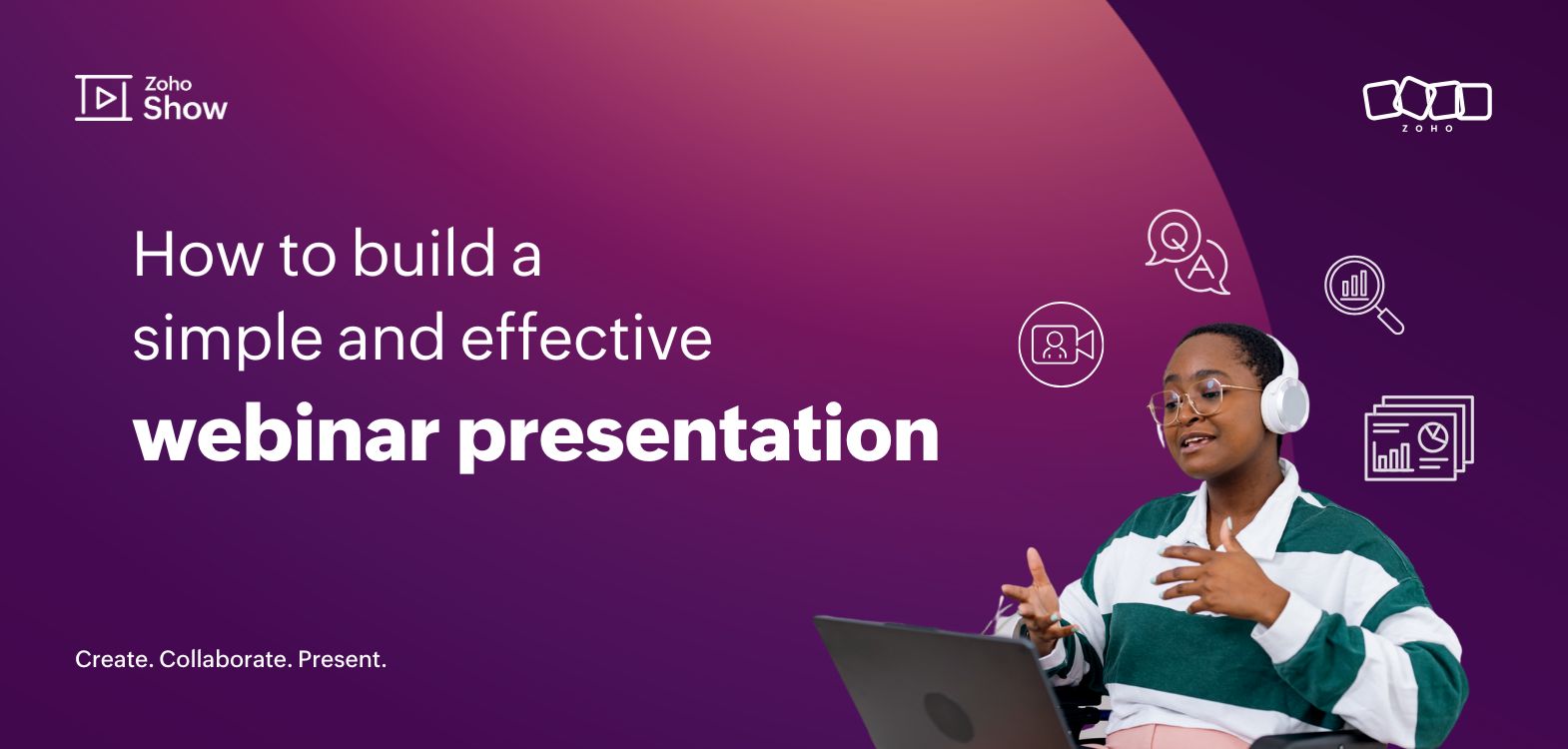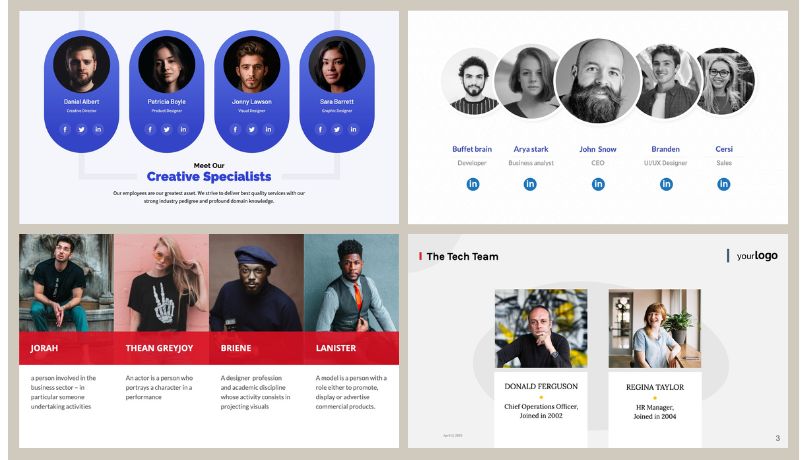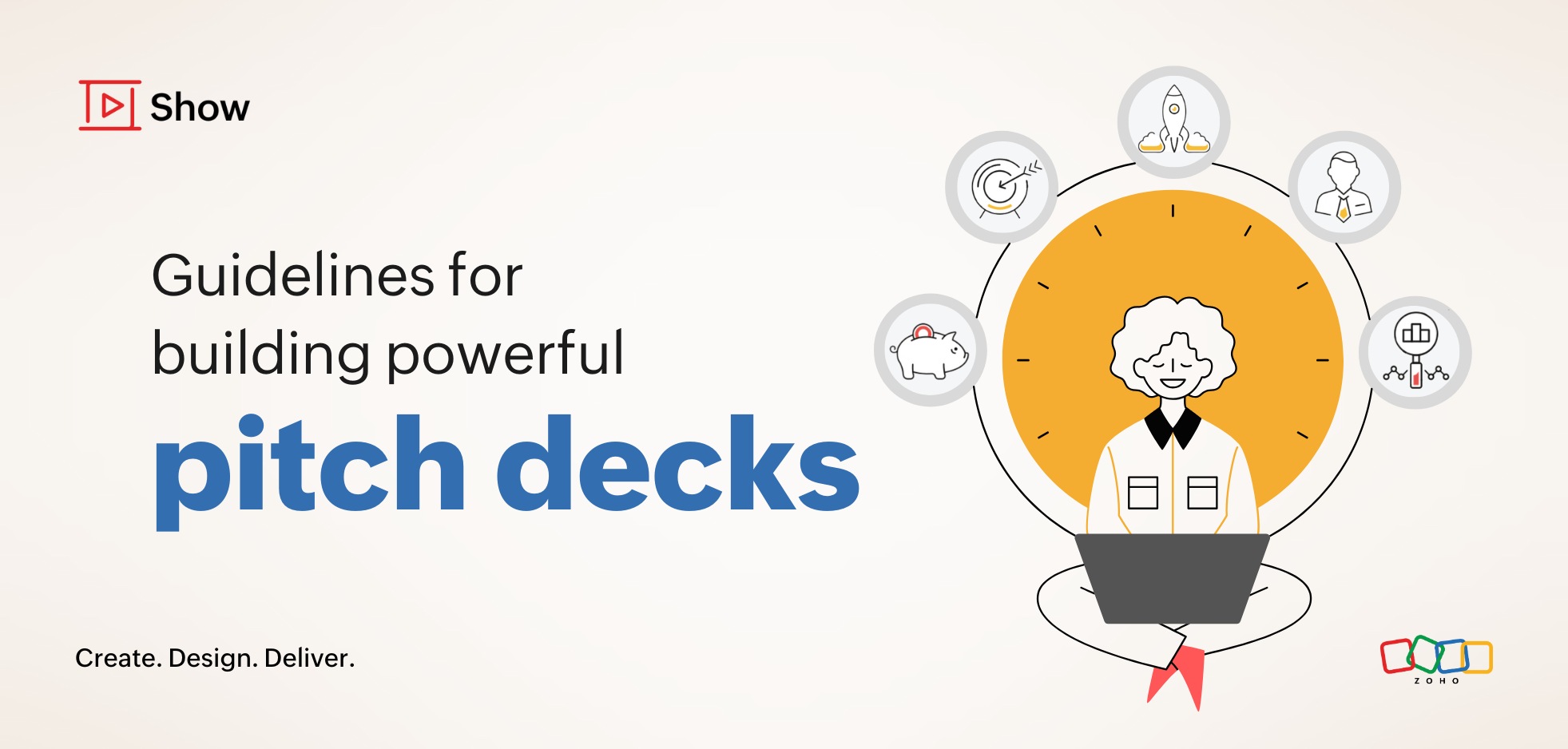- HOME
- Design & deliver
- How to build a simple and effective webinar presentation
How to build a simple and effective webinar presentation
- Last Updated : April 25, 2025
- 48 Views
- 5 Min Read

Planning a webinar? It's a great way to share knowledge, connect with your audience, or showcase your work—whether you're running a business, training a team, or speaking to a wider group.
Preparing a basic script for your webinar is your first step, but it’s not where the magic happens. You need a strong presentation deck and a smooth delivery to make an impact. In this blog post, we’ll share simple, effective ideas to help you build a presentation that supports your story and present it with confidence. The goal? To make your next webinar a memorable experience your audience will love!
What should you keep in mind before you start preparing a presentation for your webinar?
There are a few things that you need to get right before you can build a full-fledged deck and start practicing for your webinar. Here's the foundation of a strong deck.
Objective
Start with clarity. Define the goal of your webinar—whether it’s generating leads, creating brand awareness, or educating your audience. Use this objective as a guiding light throughout your session planning.
Target audience
Know who you’re speaking to. Let this guide your tone, your delivery style, and even how you promote your session. Pick the right channels to reach your audience. Choose session times that work best for their time zones. If you’re reaching out to people from multiple regions, consider hosting repeat sessions at different times.
Key messages
Decide on the core messages you want your participants to remember. Keep reinforcing these messages throughout the session—whether it’s a technique, a product feature, or a key insight.
Structure
Once your objective, audience, and key message are in place, start working on your webinar flow. Map out your topics and subtopics. Plan when to include polls, quizzes, or audience questions. A well-structured session is easier to present and easier to follow.
Call to action
Determine the next step you want your audience to take once the session concludes. It might be booking a demo with your sales team, visiting your website, or signing up for a free trial.
What should you include in a webinar presentation?
Now that you have a structure in place, it’s time to build your deck. It’s a good idea to create your presentation first and write your script alongside it. This will help ensure alignment and clarity.
Start by introducing the hosts
Introducing the speakers before the session starts is a great way to give your audience an overview of the presenters and highlight their expertise. This will help them feel more connected and engaged throughout the session.
Run through the agenda
Give your participants a quick glimpse of what they can expect from the session. If you're planning on sharing your webinar presentation with your audience later, you can also hyperlink the headings from the agenda to their respective slides. This will make it easier for the viewers to jump to the part they need later.
Start with a simple narration
Ease your audience into the topic with a relatable story or scenario. This helps set the tone and ensures your attendees are following along.
If you’re a business, you could share a short story about your brand or how the topic connects to your journey.
Include data and infographics
Use data visualization and infographics when you need to break down complex information and reinforce your key points. Choose the most appropriate chart, graph, or visual to highlight trends clearly.
A well-chosen visual can communicate insights at a glance, especially if you don’t plan to spend much time on that particular slide.
Initiate activities or provide demos
If you're conducting a training webinar, be sure to conduct some activities once you've explained the concept in theory. This will help your attendees see the value in the session.
Similarly, if you're running a sales or marketing webinar to promote your product, provide demos. This will help the prospects evaluate and consider the product.
Make time for questions and discussions
Always set aside time to answer questions and engage in discussions with your audience. If needed, you can also include a quick Q&A midway through the session to keep things interactive.
Because this is usually the final part of your webinar, make the most of it by displaying a clear call-to-action. Share a QR code linking to your website, social media handles, or any relevant resources, so participants know how to stay connected or explore more after the session.
Webinar best practices
Beyond your content and deck, here are a few extra tips to elevate your webinar experience.
1. Include branding: Choose a color theme, add your logo—subtle branding builds familiarity.
2. Stay updated on design trends: Custom illustrations are now preferred over generic stock visuals when designing presentations. Following such trends can give your slides a fresh, up-to-date feel.
3. Maintain consistency: Use the same font, text size, and color throughout. Keep spacing uniform across slides to avoid a cluttered look.
4. Keep the tone conversational: Your audience will lose interest if they feel the presentation is scripted, so personalize and make it conversational.
5. Add source links: This makes the data and information in your slide more credible.
6. Recap what you've covered: It’s a great way to reinforce key takeaways as the session ends.
7. Run polls mid-session: This boosts engagement and offers other insights you can use later.
8. Ask for feedback: This will help you understand how well you did and what you can improve the next time.
9. Record the session: Let your audience know it’s being recorded so they can focus on listening rather than taking notes.
10. Choose the tool: Test out different software while you begin organizing the webinar. Be familiar with the configurations and different options available in it.
11. Do a dry run: Practice presenting your webinar to your peers. It will help build your confidence with presenting.
Final thoughts
A successful webinar isn’t just about having great content—it’s also about how you present it to your audience and how much of it they retain. A strong, well-thought-out presentation can capture attention, but your confidence and clarity as a presenter will leave a lasting impact.
Before you start presenting, do a quick check: test your audio and video, make sure your slides are all set, and check your internet connection. Keep a glass of water nearby, take a deep breath, and relax. When you're calm and ready, your session is more likely to go smoothly, and your audience will feel it too.
Sending good vibes your way for your next presentation!







